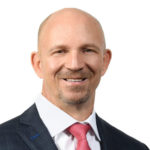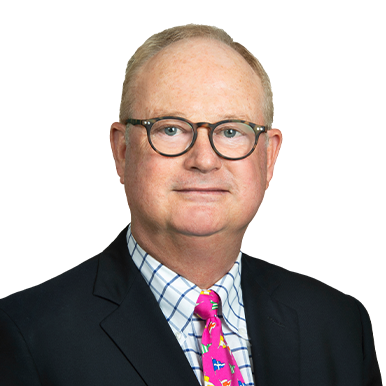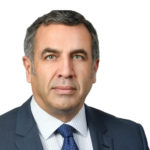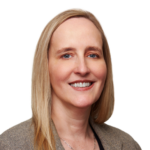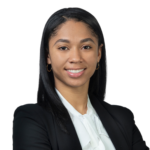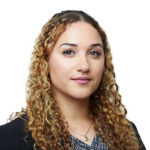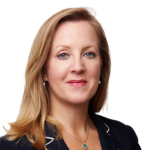Q1: HOW WOULD YOU CHARACTERISE MARKET CONDITIONS ON THE PROPERTY CAT SIDE?
Conor Gaffney: The 1/1 and 1/4 renewals were the first indicator that buying conditions would be tougher than any time in recent history. A number of coverages were short placed , which historically would have been oversubscribed.
This trend has certainly continued based on what we’re seeing now in terms of the 1/6 and 1/7 renewals. The market has certainly hardened more over this period.
Brad Adderley: When was the last time we saw a market like that? Where people are struggling to place normal business? For years we’ve been hearing about soft markets, worsening terms and conditions, yet everything has suddenly changed. Why is that?
Gaffney: It is at least 15 years since that’s been witnessed, particularly on some of the nationwide carriers who have big core relationships with reinsurers yet couldn’t get their placements filled. I think it’s a sign of what is going to happen in the mid-year and maybe year-end renewals.
Peter Bell: There is a complete capacity crunch, especially in Florida; that hasn’t happened for a very long time. I’m not quite sure what’s going to bring the market back again. It’s going to be a harder market for the next couple of years.
Adderley: Historically, this has triggered reinsurers to launch in Bermuda. You just mentioned people can’t place the risk. Do we think then someone will come to the market and say “I’ll put a billion dollars in and I’m going to write only cat risk. Rates are going up, terms are getting better; I’ll take a punt for three years or five years”.
Tim Mardon: It’s difficult to get a rating to do that now. You can do it fully collateralised, but to get an AM Best A- rating would not be easy. I don’t know how keen they’d be to support that monoline strategy.
Bell: It’s more difficult to raise money, whether for insurance-linked securities (ILS) or a rated balance sheet, especially for new entities.
Adderley: I would say some clients struggle, but there are some great stories out there. People who have raised money quickly. Most people would start off with $200 million from a third party.
Gaffney: We can’t forget the impact of macroeconomic factors. Significant increases in inflation will impact so many different lines of business. We’ve got social inflation and commodity price inflation, now coupled with a rising interest rate environment. When that happens, investors have a much greater opportunity set to consider.
Adderley: If it’s that hard to raise capital, rates are going up, people have been burned, how early are people going to do the renewals? If what happened in June was so bad, will brokers be coming to you guys even earlier?
Jerome Halgan: It greatly depends on what happens during the wind season. Over the past few years all the losses have been small to mid-sized, with an above normal frequency of $10 billion to $25 billion events which have hit insurers’ profitability.
The area of the market that has not been hit is the one covering remote Industry losses which would have been hit with events such as Katrina or Andrew.
They might decide to adjust asset allocations to alternative asset classes (such as ILS). So while it might have been easy to raise capital a couple of years ago, the dynamics of the market now are very different.
That has been perceived as a pocket of safety and is where a lot of the capacity has been migrating of late (particularly cat bond investors). If that pocket gets hit this summer, its perception as a safe place goes away and you have a very interesting market for the year-end and forward.
There has already been a shift of sentiment in the market conditions with the June and July renewals being markedly harder than it was at 1/1 and in fact harder than it has been in quite a long while.
Q2: WHAT IS UNDERPINNING AND DRIVING THESE MARKET CONDITIONS?
Jerome Halgan: Loss experience in the first place, but inflation is a big factor. For the 1/1 renewals, there were some “heads in the sand” with some capacity still viewing inflation as transitory back then. Today everybody accepts that inflation is going to be in a range around 10 percent and that it has an impact on price and capacity.
Demand is increasing due to inflation’s impact on everyone’s PMLs. And given some noted withdrawal of capacity and minimal new supply, the supply and demand equation turns into the favour of the seller who has capacity.
Kent Howard: We continue to hear expectations that North American wind-exposed property rates will be the hardest we’ve seen in a decade or more. Rates are improving but inflation, including rapid commodity inflation, is increasing at rates not seen since the early 1980s. I’d be curious if you think rates are keeping pace with inflation.
Peter Bell: Probably not on a risk-adjusted basis. Insurance rates have increased more than reinsurance rates and, on the other side, retro rates have been increasing more than reinsurance rates. We are squeezed in the middle and that is going to have to correct itself.
Tim Mardon: The impact of inflation is difficult to measure as it impacts claims and rebuilding costs. That means it has a geared effect into cat layers.
Jessica Laird: You also have to consider climate change. The risk is increasing, we believe, and we are factoring that into our pricing. Even with an increased view of risk, the risk-adjusted rate is going up, but it can vary significantly depending on what layers you are looking at.
Further up the risk tower where layers haven’t experienced losses, there seemed to be more crowding. Lower down, we have seen markets pull back capacity. Overall, however, appetite for volatility is less.
Conor Gaffney: Yes, and the withdrawal of capacity has also been mainly from aggregate products (or products offering earnings protection). That is where supply has gone away.
And for cedants no longer able to purchase these aggregate covers, they’re having to take action and review the scale of their property cat writings.
Brad Adderley: Where players have pulled back on property cat capacity, is that because they are less interested in those lines completely, or is it simply due to the pricing?
Jerome Halgan: It is also the consequence of business planning which can happen months before the renewals are done. A number of reinsurers, given the losses in the past few years, decided to reduce their property cat portfolio and focus on the simpler and easier to price deals (as opposed to aggregate covers for example).
For these companies this was more of a strategic decision and on the risks that do not fit their revised appetite, it is not about price any more.
Bell: I agree the volatility at the bottom has put people off, even with rate increases. There have been some big increases over the last couple of years but the underlying primary rates have been increasing by more.
Q3: WHAT ABOUT THE CASUALTY SIDE: ARE WE SEEING SIMILAR MARKET CONDITIONS THERE?
Brad Adderley: Rates have improved for several years but as people are leaving the cat market, that is now flattening, driven by the increased competition.
Peter Bell: Yes, there has been an increase in specialty and more pressure on casualty as people have been forcing their way into those lines. Cedes have increased to a level now where they cannot go up more.
Conor Gaffney: In terms of property cat, many players will wait until the wind season is over because so much depends on that. That will determine where they’re setting their risk appetite. It will also be driven by the risk appetite of the retro players.
If their appetite changes significantly post a loss event it could be completely different outcome. People are reluctant to nail their colours to the mast until the wind season has played out.
Adderley: I agree. If it is a bad wind season, all bets are off.
Gaffney: When you also overlay the macroeconomic factors, most reinsurers are trying to reduce their exposures, especially to covers offering aggregate protection. That has a knock-on effect. If people can’t purchase their aggregate covers, it’s going to change their risk appetite; they will have to change their inwards writings as a result.
So it’s going to depend on how the wind season transpires. It could be mid-October before we know much of this.
Jerome Halgan: It also depends on clarity, on price. We have enough capital to do a lot more than we’re doing in the property space but, given where the price is, we’re happy with our existing book.
For us to write more business, we need something to change. It’s simply a question of supply and demand but it can be hard to find a level that satisfies both the buyer and the seller.
Jessica Laird: Available capacity will also depend on where prices will clear on renewal. At Arch, we have enough capital to do more than what we’re doing currently in the property cat space but to do so we would seek to obtain improved margins.
It’s simply a question of supply and demand—supply will increase as price goes up but it may be hard to find a level that satisfies both the buyer and the seller.
Adderley: It will also be a lot harder to place multi-year contracts; people are too worried about inflation.
Tim Mardon: Everyone’s cutting back on multi-years. One issue is that if you offer multi-year but you can buy your retro only on a 12-month basis you get an imbalance.
Halgan: Unless you are a very high quality client it will be very hard to find multi-year support—or certainly more expensive.
Gaffney: Capacity has dried up over the past 12 months; there’s very little multi-year capacity available now.
Adderley: All we’re hearing is rates are becoming harder; terms are also getting tighter. There has been a bit of a snowball effect.
Mardon: Most of these issues are around US cat business specifically. We’re not seeing the same issues in other territories.
Gaffney: There are pockets in the international cat space. Australia has a supply-demand imbalance. The modelling perhaps isn’t as sophisticated as the US. We’ve seen raised retentions, increased prices, and certain coverages historically offered are now unavailable.
Q4: HAVE WE ALSO SEEN CHANGES IN THE ATTITUDES OF ILS INVESTORS? HAS THERE BEEN A FLIGHT TO QUALITY?
Kent Howard: That’s a very complex question: how will the ILS space respond? ILS investors experienced tough years in 2017 and 2018 but if we’re pushed into a global recession, will investors again be searching for investments with low correlation to the financial markets, even despite the ever-increasing attractiveness in fixed maturity investments as a result of rising interest rates?
Will there be a reallocation back to the sector? We’re beginning to hear that conversation again in certain circles.
Jessica Laird: The biggest objective is to demonstrate to investors that you are getting paid for the risk, taking into account inflation and climate change, among other factors, in our underwriting. The uncorrelated component of ILS has always been attractive but the industry needs to get better at demonstrating pricing sufficiency and addressing issues such as climate change.
Overall, the industry has not done a very good job at this, especially when events don’t happen, but we expect capital will require it going forward.
Tim Mardon: Some of the losses, and issues around trapped capital, did worry investors however. You can argue that COVID-19 losses were correlated with investment losses, which challenges the correlation assumption.
Brad Adderley: I always wonder how short term the memories of underwriters or investors can be. I wouldn’t be surprised to see more money come in.
Peter Bell: The money can come from different places—maybe it will switch from the pension funds to the hedge funds again.
Adderley: What’s interesting is how many of the same investors are investing in numerous players in Bermuda. The same investors are investing multiple times. It’s not bad at all, it’s interesting.
Laird: They have certainly not forgotten, but they want to make sure pricing has been adjusted for what we have learned in the past five years as well as for climate change. But rates are moving up on a risk-adjusted basis, which does make for an attractive opportunity. It is a question of demonstrating this to investors.
Jerome Halgan: ILS investors are more discerning now than they were in the soft market. They haven’t forgotten the claims observed since 2017. As a result, capacity is being given to underwriters who are doing the right things, and this goes beyond the basic of getting price increases: it also includes strength in portfolio construction, risk selection, reserving, reporting, etc.
The guys that have done this well are getting a lot of that capacity; those that didn’t do it well are losing it.
Howard: We’re seeing some consolidation of capacity. Sophisticated investors begin to better understand the complexities of the market with each passing year and their allocations become more discerning with the passage of time. Some of them are exploring again and more recently, others are considering starting up their own collateralised balance sheets.
Conor Gaffney: You’d have to wonder about asset allocation, be it from a hedge fund or pension fund, and whether there will be a potential rebalancing.
Laird: Everyone looks at how we try to balance that. The diversifying nature of the risk is important, as is the cost of capital and the attractiveness of the opportunities.
Q5: WHAT HAS BEEN THE INFLUENCE OF THE STARTUPS THAT HAVE FORMED ON BERMUDA?
Tim Mardon: They don’t seem to have much capacity in US property cat. They seem to be pretty cautious in their approach to certain risks.
Peter Bell: They have not had much impact as they’re much more specialty-based. It gives a different complexion to those lines but they are not big cat players.
Brad Adderley: But on the basis this is the best market for a long time, is it not possible we could see one or two monoline cat players launch?
We’ve heard of players unable to place certain risks; is it not possible that someone could raise a billion dollars to deploy in the cat market?
Bell: It’s much more difficult now. The regulatory environment is very different. It would be hard to get a rating. There is money out there and the brokers are obviously going to want it because they need capacity. It’s a bit harder than it used to be—to justify that lack of diversity.
Mardon: I agree. It’s economies of scale; the costs of doing something now, between risk model agencies, rating agencies, regulation, hiring a team of people—it’s more economic to go with an existing platform. But you could find a sidecar to do it, or even a syndicate in Lloyd’s.
There are numerous ways you can run a short-term, say three to five-year, cat strategy, without hiring a lot of new people or setting up something from scratch.
Jerome Halgan: The tough thing for new players is that it’s very hard to create a diversified portfolio if you’re only seeing the deals where the clients need you the most, such as US cat or cyber.
For example it’s difficult to grow in Japan or Europe unless you’re willing to price below the market which is not a good proposal.
Conor Gaffney: That is why we might see more of an inflow of capital towards sidecars.
Bell: If someone’s got capital, it’s easier and cheaper to stand behind someone else that already has capital. Another challenge for startups is finding the underwriters. There actually aren’t that many underwriters around. Unless they’re out of a job, they’re all on relatively long notice periods. It makes it tricky.
Adderley: Yet we haven’t seen much about new sidecars being formed.
Q6: WHERE DO CARRIERS SEE GROWTH COMING FROM GIVEN THESE MARKET CONDITIONS?
Conor Gaffney: The first aspect of growth is that from the rate hardening we are seeing. There has to be a rebalance in the supply:demand equation; a reduction in capacity in order for rates to increase. On the property side, I can’t see people growing their books until there is a rebalancing of that supply:demand equation.
There is growth in speciality lines. With the Ukrainian crisis, there is growth around lines such as political violence, aviation, war, political risk, trade credit. All of those classes have been impacted and a number of reinsurers will look to deploy capacity there—away from property cat.
Jerome Halgan: When you consider growth, inflation will influence that. Just by renewing their portfolio next year, carriers should be able to grow premium by 10 percent or more as rate changes are expected to be well into positive territory as a whole. That’s generally a good thing for reinsurers.
Cyber is one of the market segments where you see the highest rate and demand increases as well as a good amount of first-time buyers, so there are plenty of growth opportunities here. It is a very difficult and technical line of business and has a high degree of systemic risk, so the appetite for growth will vary greatly between capacity providers.
Peter Bell: We have seen strong growth on the mortgage reinsurance side in recent years. There has been a lot more issuance into that space. That may slow now and the housing market is going to be a little bit tougher, but that’s been a big space for growth. Cyber is a tough market, but it’s definitely going to get bigger. We’re evaluating where we think the market is really going. Other areas of growth might be around structured risk transfer from the European banks. There is demand but those deals take a lot longer to get over the line. It means a lot more work around them, but there are definitely opportunities.
Tim Mardon: We have grown via managing general agent (MGA) partnerships which, for us, have been focused on lines of business that are not cat-exposed, both insurtech and traditional E&S lines. We are writing cat on the traditional reinsurance side. I’m not quite sure what capital availability, balance sheet and investment capital, will be for some of the insurtech MGAs going forward. But that’s going to be an interesting one to watch.
We see the MGA move as being an easier and more efficient way to grow an insurance franchise that will complement a reinsurance book. It can be difficult to make that move by building it yourself.
We write most of our cyber through one of our MGA partnerships, and agree it’s a growing risk and that’s going to be an interesting market going forward.
We have diversified away from a property-driven reinsurance book. We have grown casualty and specialty insurance through our MGA model. We’ve also invested in numerous partnerships, including in Florida, which may sound counterintuitive, but we think that when all the problems shake out, there is probably an opportunity—it just hasn’t happened yet.
Jessica Laird: We see lot of interest on environmental, social and corporate governance (ESG) business coming from the renewable energy and sustainability environment with a push to net zero.
That marketplace is very much in its infancy but as we see more disclosure requirements for companies, they are seeking risk transfer solutions to manage exposure, whether it’s crop or renewable energies or various lines that connect in some way to the transition to net zero.
The risk transfer solutions are attractive and can be solution-oriented, so we are trying to develop that marketplace. The solutions can come in many forms. Maybe some of them do exist already in specialty markets, but some could be new opportunities, so we’re trying to think of new ways to structure risk transfer solutions.
Brad Adderley: In terms of Bermuda generally, we’re seeing a lot of interest in cybersecurity and new insurtech companies. You’re going to see a lot more crypto insurance companies in the life space and the reinsurance space. It will be quite interesting.
How many of them are going to be successful? I’m not sure, but we get calls on a weekly basis. They’re all doing different lines. There are not many jurisdictions that regulate crypto insurance, but that is exactly what the sandbox is for. Clients and investors want to know it’s properly regulated.
Kent Howard: We see continued interest in the crypto and blockchain-related startups but in terms of overall capital, it remains a small but growing piece of the Bermuda insurance market. The life reinsurance space is still red hot and fresh capital is ready to enter the market via new reinsurance launches.
The run-off/legacy insurance market remains robust but the space is beginning to feel slightly overcrowded as competition for deals makes for a seller-friendly environment.
Meanwhile ILS remains strong and we’ve seen a number of collateralised insurers launch over the past four months. We also see some interest in the longer tail casualty space.
On the regulatory front, we’re likely to see some additional required disclosures around ESG issues. It will be interesting to see if insurers are able to disclose comparable ESG information that is useful for investors and regulators.
Q7: WHAT OTHER ISSUES ARE YOU SEEING?
Brad Adderley: All the new tech classifications have been helpful. It is worth noting that all this activity means Bermuda is hiring people. All these companies are hiring two or three people and having to submit hiring plans that the BMA is asking them to meet in the first two years. That is really cool because that will grow new lines of business and new ways of doing things that will help fuel the insurance market.
We are in a new part of the cycle. We all saw consolidation and people lost jobs and now we have all these new startups hiring again. It is the circle of life. It keeps us sustainable as a jurisdiction.
In terms of the ESG reporting requirements, we haven’t seen pushback. It is certified and I wonder with ESG how many people were doing it beforehand. We’re doing internal policies but now the BMA is supporting and driving that change.
Peter Bell: Most buyers have to take what the market will give them. The good buyers will work that out early, come to the market early, and engage with reinsurers and get it out of the way. The rest will be scrapping it out much later.
Adderley: A few years ago it was the reverse. The buyers were dictating terms, dictating pricing. Pricing was going down. It was a race to the bottom. I’m wondering now—are reinsurers doing the same in reverse or is there more nuance to it based on the risk?
Bell: It depends on the line of business. Property cat is different from casualty, from marine, from terrorism. Different lines act in different ways. The cat is going to be tougher just because there’s going to be a lack of capacity. Buyers have to work out which way they’re going to go.
Will they look to buy more quota share, but less excess of loss? It’s a roundabout but it’s going to be tough.
Conor Gaffney: We have rising reinsurance costs and rising retro costs. If the cost of reinsurance capital is higher than internal costs of capital, it doesn’t make sense for cedants to buy as much. So cedants could look to retain more. Also, in the cat space, if you cannot purchase sufficient limit using traditional products, you’re going to have to go down the route of buying some of the non-traditional products out there.
Jessica Laird: In the capital markets, we have seen a widening on pricing driven by more companies looking to seek protection. There’s no simple solution to any of this.
Gaffney: Last year we saw buyers, especially the big players, starting to leverage their purchases. If larger cedants have a multi-class relationships with reinsurers and they’re short-placed on some of their property cat placement, they say to their reinsurers: “If you want to keep your positions on other lines of business, you’re going to have to facilitate lines on property cat”. I think that’s a trend that we are likely to see more in future renewals.
Adderley: I’m very interested after the doom and gloom for so long of rates going down, to see the reverse. I find it quite exciting to see it reverse. We might see more sidecars, be it a new vehicle or a new structure. Inflation will also be a massive driver.
Laird: Inflation will continue to drive pricing in the market. It is driving an increasing view of risk not just in Florida, but across the US and globally as well.
Tim Mardon: Our view is that even with no substantial losses areas such as retro are going to remain hard going into next year. There are fears over climate change and interest rates moving up, which also impact pricing. If you look at all those factors together, it points to the market continuing to be difficult and hard in the peak zones. If there are substantial losses this year, all bets are off for next year. It’s going to be very interesting.
Bell: We are in a good space, partly because of our diversification—we’re not just property cat. We do lots of other lines but markets are harder in many different places. So that’s good. The regulatory framework in Bermuda means capacity is drawn to it.
The property cat renewal will be very tight, which is good for us because we have capacity at the right price and the right time, but it’s going to be tough.
Jerome Halgan: Reinsurance is a people-intensive business, so finding talent is key to succeed and be able to grow and address new opportunities. We’ve been able to grow our staff by a third over the past year and attract very high quality people. Bermuda is a good place for that to happen and Arch’s reputation is key, but we need to do even better.
As an example, although we’ve had a very active intern programme running for many years, this year we have doubled its size to give more opportunities for young Bermudians to be introduced to the reinsurance industry.
Gaffney: The macro headwinds of social inflation, commodity price inflation and rising interest rates are the concern. When you couple that with wariness of investors and stakeholders around whether we have a grip on climate change as an industry, it suggests 1/1 will be a continuation of the hardening market observed in recent renewals.
